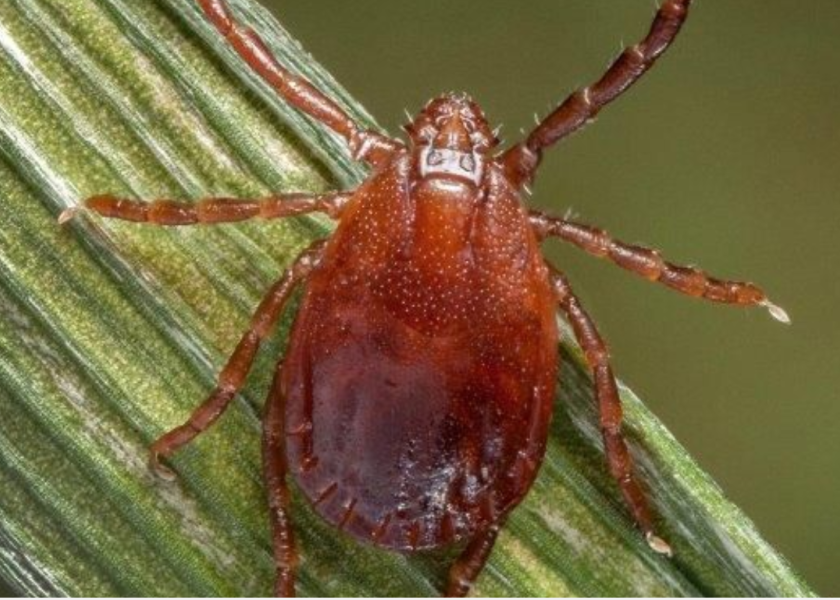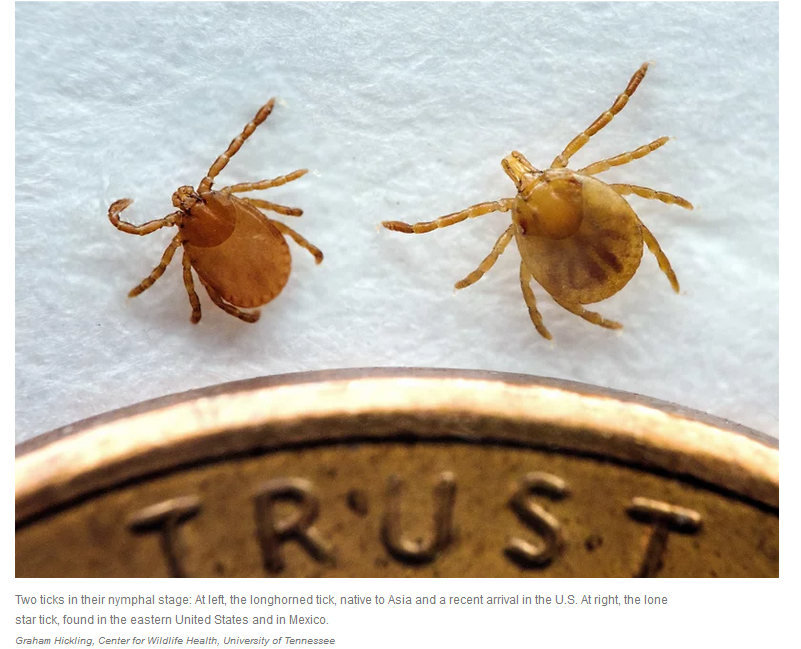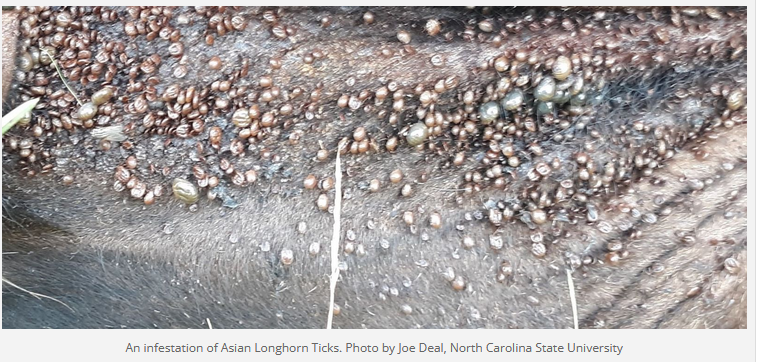Asian Longhorned Tick Marches into 17 States

What kind of pest can move into a country and sweep across a third of it in only four years? The Asian longhorned tick (ALT), for one.
A native of southeast Asia, the tick’s presence was formally recognized in the U.S. in 2017 in New Jersey. The tick was found on an imported Icelandic sheep and confirmed by the Rutgers Center for Vector Biology.
By last September, the U.S. Centers for Disease Control (CDC) had confirmed the tick (Haemaphysalis longicornis) is now present in at least 17 states: Arkansas, Connecticut, Delaware, Georgia, Kentucky, Maryland, Missouri, New Jersey, New York, North Carolina, Ohio, Pennsylvania, Rhode Island, South Carolina, Tennessee, Virginia, and West Virginia.
Many Tick Species
Ticks are a growing concern for public health officials. There are about 90 difference tick species in the U.S., and tick bites and tick-borne diseases more than tripled here between 2004 and 2016, according to the CDC. There were more than 70,000 cases of diseases spread by ticks in the U.S. in 2016 alone.
So how concerning is the ALT, relative to other tick species in the U.S.?
Researchers are unsure because the tick is relatively new here. The good news is while the ALT can carry a virus that does contribute to human hemorrhagic fever in eastern Asia, there have been no pathogens associated with ALT in the U.S., according to researchers at John Hopkins Medicine.
However, the ALT can be a parasitic problem in birds, wildlife, livestock and even dogs and cats. While the ALT has been found in limited numbers on horses, pigs, sheep, goats and chickens, it can cause economic losses via the disease, T. orientalis, in dairy and beef cattle, according to Kevin Lahmers, a veterinary pathologist at Virginia Tech.

Common Characteristics
Research shows the Ikeda strain of T. orientalis can lead to severe clinical signs and death of up to 5% of affected animals, according to Drs. Kelcey D. Dinkel and David R. Herndon, respectfully, Department of Veterinary Microbiology & Pathology, Washington State University. They reported their findings in a March 2021 article published in Parasites & Vectors.
Common symptoms of T. orientalis in cattle are similar to anaplasmosis and include fever, anemia, jaundice and lethargy, Lahmers reports. However, the majority of cattle that contract the disease appear to be asymptomatic or minimally affected.
“We know that because whenever we find clinical cases, we sometimes see that 75% to 100% of the herd is positive at the time of the first detection of a clinical animal,” he reports. “So, some herds can have it without anyone knowing it.”
Once cattle are infected by the parasite, they often carry a large ALT load.
“The Asian longhorned tick has some things about it that make it challenging to address,” Lahmers says.
One, it reproduces by parthenogenesis, meaning it doesn’t need a mate.
“All of the ticks that have been observed in the United States so far are female. Because it doesn’t have to find a mate to reproduce, it can spread faster,” he says.
High Population Numbers
A single female ALT can create a large population of ticks. It produces 1,000 to 2,000 eggs at one time, according to the USDA Animal and Plant Health Inspection Service (APHIS).
Also, because the ticks reproduce asexually, it appears there's a shortened life cycle rather than a year-long life cycle. “We can see multiple stages – the larva, nymph, and adult – all at the same time on the same animal,” Lahmers explains.

There is no effective treatment other than supportive care for clinically ill animals. Tick control, pasture management, and maintaining a good plane of nutrition are important preventive measures that can be implemented, Lahmers says.
Currently a PCR test is available on blood or by submitting the spleen of necropsied animals to differentiate the disease from anaplasmosis. If veterinarians or producers suspect the disease in their area, they are encouraged to let their state department of agriculture know.








